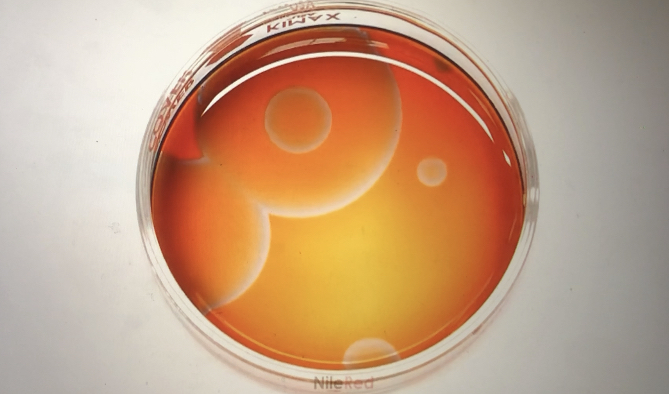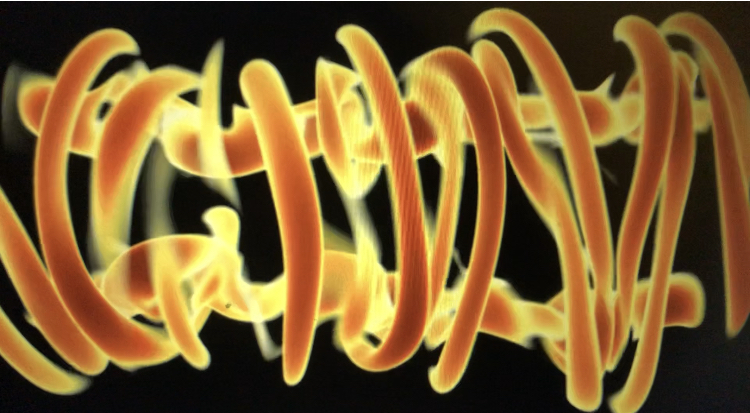Art loves Sciences
Enjoy the art, Learn the science
You will find here some media content and my crossover of art and science This blog aims to show the strong links between art and the sciences. Often these two disciplines are described and thought of as incompatible. This separation between art and science is easily observed on university campuses where their respective faculties are located opposite the campus. Far from being conflicting subjects, they complete, help, grow, inspire and understand each other. There exist infinite amounts of ways to show the close relationship between art and science. Here are a few I like and wanted to share. I hope you like it. Enjoy the art, learn the science. I started this project on Instagram (@artlovesciences) a year ago. Now, you are about to read the new blog versions.
Lastest on Art loves sciences
Art
Beautiful picture of a mice brain cells and pollen grain made by my co-worker at the SWC UCL London.Sciences
Purkinje cells in the cerebellar cortex imaged by Victor in the #LIMLab at the @sainsburywellcomecentre. Networks of neuron like these are responsible for all the thoughts, feelings and dreams we experience everyday. Purkinje cells are critical from motor learning. They are some of the largest neurons in the brain and their dense tree-like dendritic structures branch outwards allowing them to communicate with other neurons.---------------------------------------------------------
Art
Beautiful picture of a pollen grain made by my co-worker at the SWC UCL London.Sciences
Two-photon excitation microscopy (TPEF or 2PEF) is a fluorescence imaging technique that allows imaging of living tissue up to about one millimeter in thickness. Unlike traditional fluorescence microscopy, in which the excitation wavelength is shorter than the emission wavelength, two-photon excitation requires simultaneous excitation by two photons with longer wavelength than the emitted light. Two-photon excitation microscopy typically uses near-infrared (NIR) excitation light which can also excite fluorescent dyes. However, for each excitation, two photons of NIR light are absorbed. Using infrared light minimizes scattering in the tissue. Due to the multiphoton absorption, the background signal is strongly suppressed. Both effects lead to an increased penetration depth for this technique. Two-photon excitation can be a superior alternative to confocal microscopy due to its deeper tissue penetration, efficient light detection, and reduced photobleaching.---------------------------------------------------------
Art
Beautiful picture of retinotopic maps of a mice visual cortex(V1)Sciences
Retinotopy (from Greek τόπος, place) is the mapping of visual input from the retina to neurons, particularly those neurons within the visual stream. Retinotopic maps in cortical areas other than V1 are typically more complex, in the sense that adjacent points of the visual field are not always represented in adjacent regions of the same area. Regions having a positive field sign (red) represent non mirror image transformations of the visual field. A negative field sign (blue) indicates a mirror-image representation—regions with values close to zero lack defined topographic structure. Transitions in field signs between positive and negative values correspond to reversals in the organization of the visual map gradients.---------------------------------------------------------
Art
Drawing of Tesla and Einstein by the great artist and physicist @xingchen_fan.Sciences
Nikola Tesla pronounced 10 July 1856 – 7 January 1943) was a Serbian-American inventor, electrical engineer, mechanical engineer, and futurist who is best known for his contributions to the design of the modern alternating current (AC) electricity supply system. Albert Einstein 14 March 1879 – 18 April 1955) was a German-born theoretical physicist[ who developed the theory of relativity, one of the two pillars of modern physics (alongside quantum mechanics). His work is also known for its influence on the philosophy of science. However, he is best known to the general public for his mass-energy equivalence formula E = mc2, dubbed "the world's most famous equation." He received the 1921 Nobel Prize in Physics "for his services to theoretical physics, and especially for his discovery of the photoelectric effect law, " a pivotal step in the development of quantum theory.---------------------------------------------------------
Art
Pretty shapes of natureSciences
The Marangoni effect (also called the Gibbs–Marangoni effect) is the mass transfer along with an interface between two fluids due to a gradient of the surface tension. Since a liquid with a high surface tension pulls more intensely on the surrounding fluid than one with low surface tension, the presence of a gradient in surface tension will naturally cause the liquid to flow away from regions of low surface tension. The surface tension gradient can be caused by a concentration gradient or a temperature gradient (surface tension is a function of temperature). This effect is seen in many different types of systems, including biological/non-linear. Source: Bernard -Marangoni instability YouTube + Wikipedia---------------------------------------------------------
Art
Beautiful shapes of natureSciences
Oscillating reactions are among the most fascinating of chemical reactions. In one type of reaction, a mixture of chemicals goes through a sequence of color changes, and this sequence repeats periodically. It can be thought of simplistically as a chemical pendulum (presented in a previous post). First, while the oscillations occur, the chemical mixture is far from equilibrium, and an energy-releasing reaction occurs whose energy drives the oscillating "sideshow.---------------------------------------------------------
Art
Soft matter materials are widely used in the fashion industry. The fashion industry uses these materials as a medium to express creative views. We can for example site, color-changing nail polish, mood rings for our specific soft matter examples.Sciences
Soft matter materials are deformed or structurally altered by thermal or mechanical stress. This deformation gives them different properties and aspects. In the video is shown an example of soft matter material that changes color under shear stress. The structure of the material is altered; hence the light reflection of it is modified. For the mood rings, the structural change is created by the change in temperature.---------------------------------------------------------
Art
More pretty shape of nature. I am fascinated by the shape and dynamics of the nature that surrounds us everywhere and that yet man is unable to explain. BeautySciences
Turbulence occurs when an ordered fluid flow breaks into small vortices, which interact with each other and break into even smaller vortices, which interact with each other and so on, becoming the chaotic maelstrom of disorder that makes white water rafting so much fun. Researchers at the Harvard John A. Paulson School of Engineering and Applied Sciences (SEAS) may have identified a fundamental mechanism by which turbulence develops by smashing vortex rings head-on into each other, recording the results with ultra-high-resolution cameras, and reconstructing the collision dynamics using a 3-D visualization program. Coupled with the analysis of numerical simulations performed by collaborators at the University of Houston and ENS de Lyon, the researchers have gained unprecedented insight into how fluidic systems transform from order to disorder. Physicists have been using vortex colliders to understand turbulences since the 1990s. Still, previous experiments haven't been able to slow down and reconstruct the mechanics of the collision the moment it descends into chaos. To do that, the researchers synchronized a powerful scanning laser sheet with a high-speed camera—capable of snapping hundreds of thousands of images per second—to scan the entire collision in real time rapidly.---------------------------------------------------------
Contact
Engage with me
Have the feeling I can help?
Where to find me
Geneva
Email Me At
artlovessciences@gmail.com
Text me on Signal / Telegram
Phone: (+33)7 82 51 01 89
Get to know the team
Clementine - Creator

Science
I am a Physics and theoretical physics student at the University of Manchester. Currently, I am in exchange at the University of California Los Angles to learn about biophysics. My interest in biophysics reflects very well my curiosity and enthusiasm for fields of study that cross disciplines. In the future, I ambition to become a researcher and professor in computational neurosciences. However, in my craziest dreams, I would become an astronaut.Art
Art is part of my life in many different ways. Mainly through music as I have played guitar for seven years. Understanding the theory, the science of music enabled me to diversify the type of instrument I played. As of today, I taught myself: piano, singing, ukulele, and base to different levels. Art loves sciences. When I don’t play music, I paint, go to museums, watch movies, take photographs and write this blog. Really anything that helps me express or better understand myself. I tend to like modern and contemporary art better as the subject of sciences is frequently present. I have kept art as a hobby my life; however, I hope to organize an exposition or conference on the topic of art and science in the future.
About Me
European/French.
- Fullname: Clementine Carla Juliette Domine
- Birth Date: September 07, 1998
- Job: Theoretical physics master student / Data Scientist / Futur Phd in Computational neurosicence (UCL) / musicianr
- Website: www.clementinedom.com
- Email: clementine.domine98@gmail.com
Skills
I have a Master degree in Theoretical physics
Lucia

Science
I’m a junior in college majoring in biomedical engineering. A major that has the best of both worlds, medical sciences and engineering. Even though it’s a discipline that is filled with numbers and medical terms,Art
I like to consider it to be artistic and even poetic. Besides bme, writing, and music are passions of mine. Finding inspiration in stem related topics to create art is one of the things that drives me the most, because we often over look the beauty of science.







